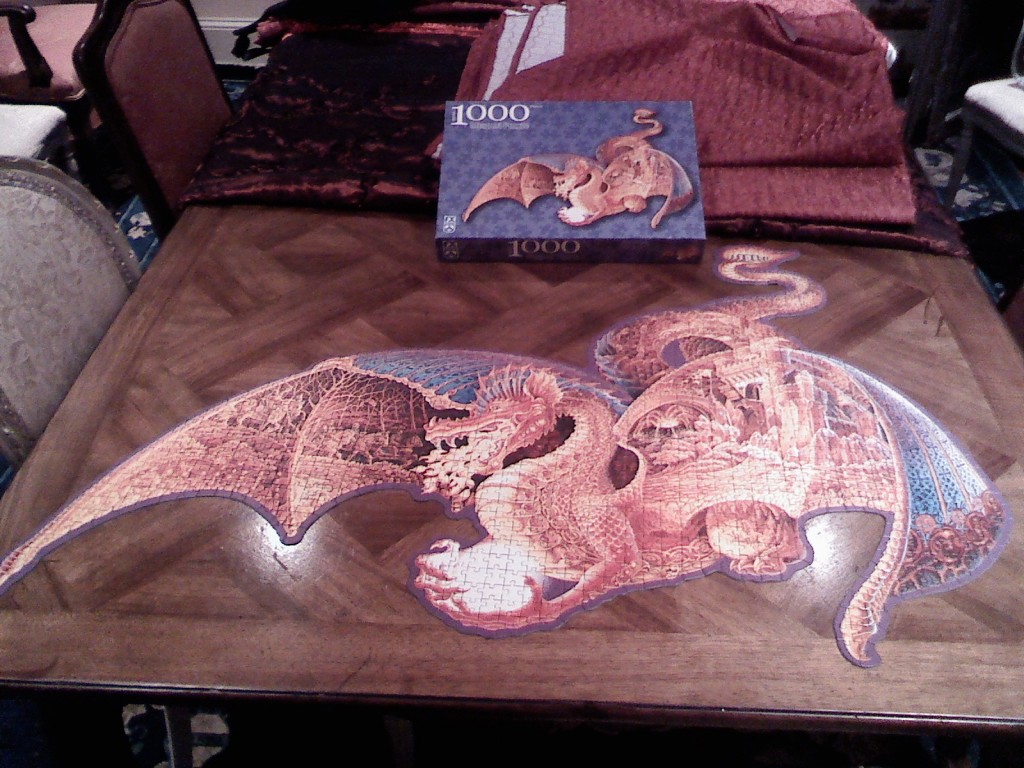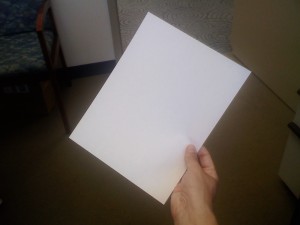
Putting together a very difficult jigsaw puzzle (pictured) with my family, I experienced a lot of the feelings, frustrations, despair and elation that I equate with many tasks, including those in my work. Let’s have a look at the process:
 Blank Slate: Ever have to write a document and start out with that blank piece of paper? How does that feel? You don’t know where to start, you feel like every move you make gets you no closer to the finish (even though it does), and you generally feel like you will never make your goal. You also might try to do the whole thing at once, which of course doesn’t help.
Blank Slate: Ever have to write a document and start out with that blank piece of paper? How does that feel? You don’t know where to start, you feel like every move you make gets you no closer to the finish (even though it does), and you generally feel like you will never make your goal. You also might try to do the whole thing at once, which of course doesn’t help.
- Begin the Outline: Literally, in a puzzle, you find the edge pieces and frame out where the puzzle will fit on your table (or maybe you are lying on the floor, as in the great Rolling Stones song “Jigsaw Puzzle”), and start to see visually where different colors, shapes and images may go. I still do not feel very good at this stage– I was still frustrated I would get nowehere, and that was not helped in the case of this puzzle, which was not square. “Edge pieces” got redefined radically. But still, I was getting somewhere. For a project, this may be a document outline or a general plan of attack with a work team. You are attacking the edges of your project, forming what the finished work will be.
- More Outline and Plan of Attack: With the frame in place, you can now start to herd the rest of the pieces into groups; this dragon has scales, pieces that look like rocks, others that look like branches, and some very stark red, yellow and white bits. You can now finish the outline of your project and assign bits to team members appropriate to their role or skill level. My son is 11, and we gave him some shapes within shapes to work on, or had him assist us on whichever part we were struggling with.
- It All Comes Together: Once you hit a certain point, you can see the finished puzzle (not just because there is a picture on the box), and the pieces which once looked lost and impossible seem to put themselves in place. Now you’re humming in your project, and you cannot be stopped. Focus is key- when we finished the puzzle, we stayed up until 1 AM because we just could not stop. You get on a roll, and you begin to see a piece of work you can be proud of. At the very least, you see the finish line and you make a sprint– hopefully, you are not staying in the office until 1 AM to get that going.
Doesn’t the puzzle look great? Now, time to put it away and start another one.
 Blank Slate: Ever have to write a document and start out with that blank piece of paper? How does that feel? You don’t know where to start, you feel like every move you make gets you no closer to the finish (even though it does), and you generally feel like you will never make your goal. You also might try to do the whole thing at once, which of course doesn’t help.
Blank Slate: Ever have to write a document and start out with that blank piece of paper? How does that feel? You don’t know where to start, you feel like every move you make gets you no closer to the finish (even though it does), and you generally feel like you will never make your goal. You also might try to do the whole thing at once, which of course doesn’t help.